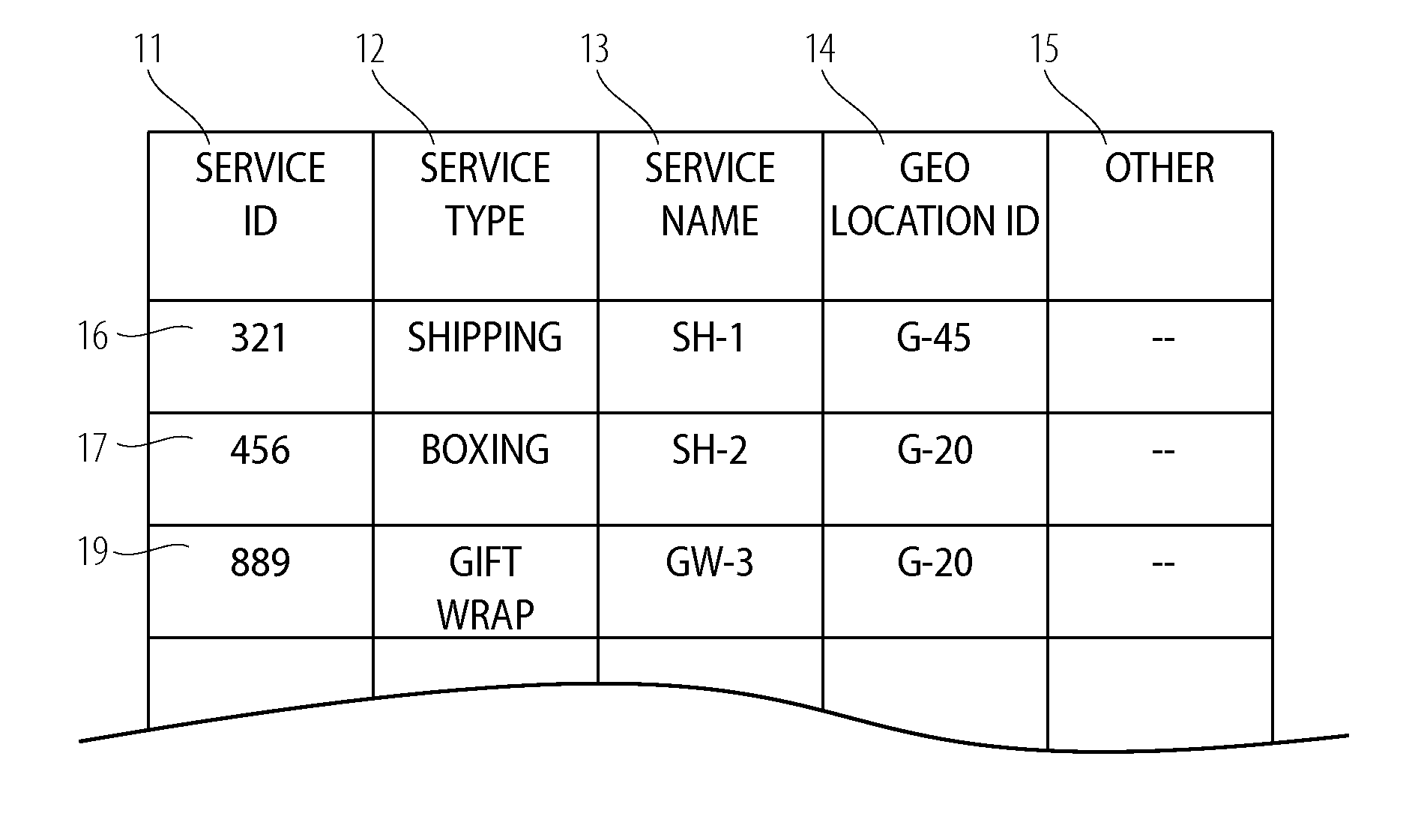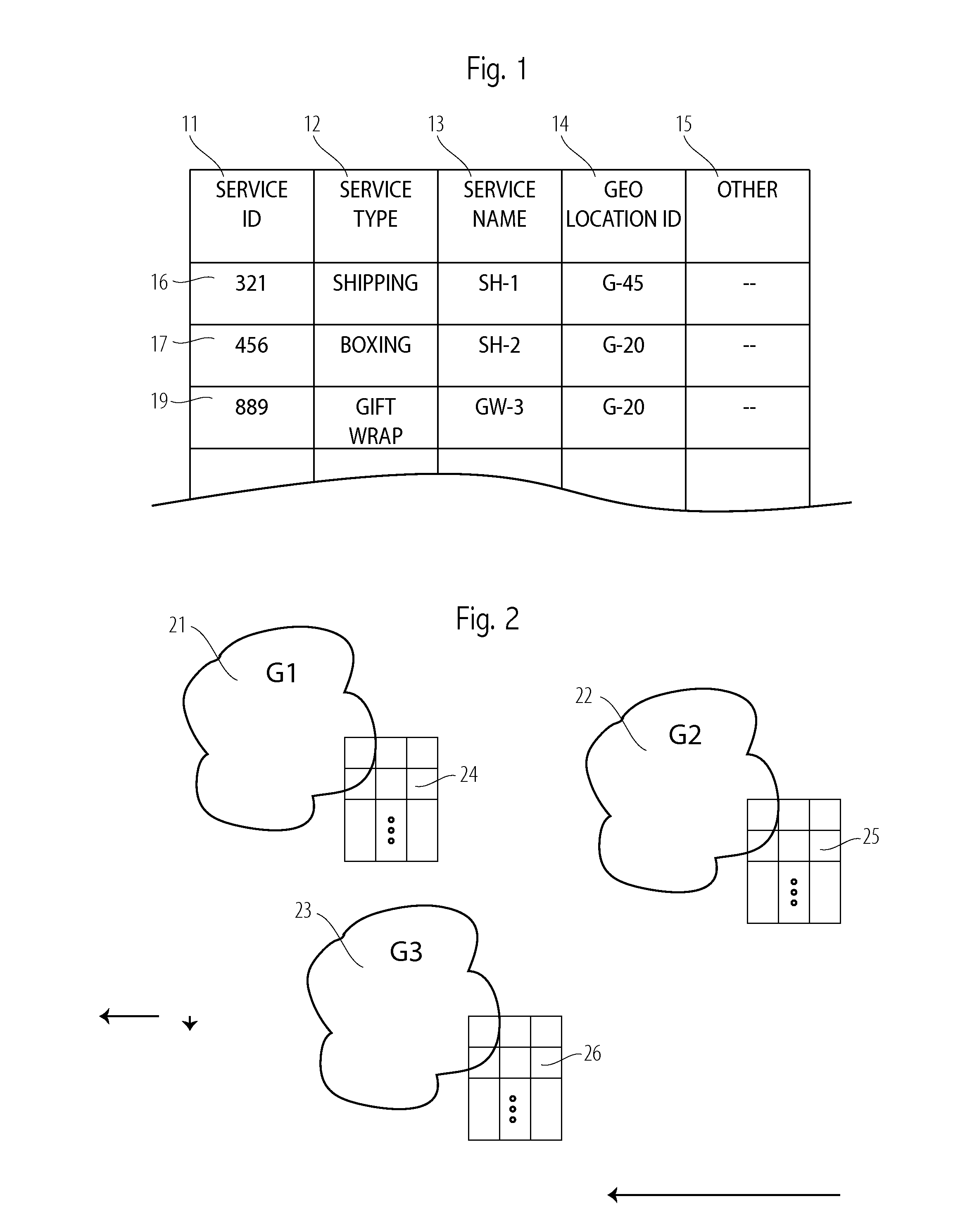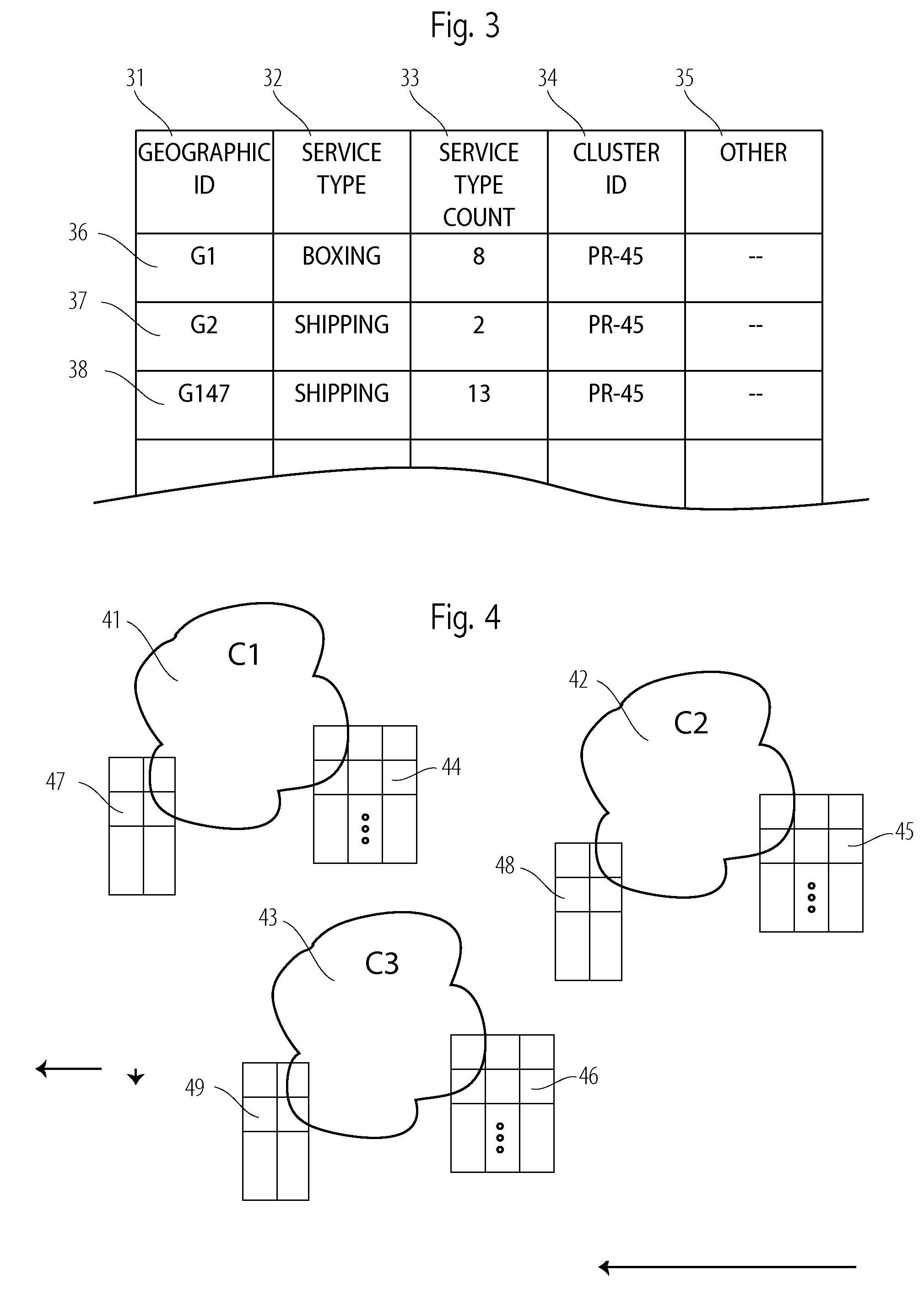Method of computing an estimated queuing delay
- Summary
- Abstract
- Description
- Claims
- Application Information
AI Technical Summary
Benefits of technology
Problems solved by technology
Method used
Image
Examples
Embodiment Construction
[0129]Turning now to FIG. 1, we see a portion of a simplified geographic service point table with three service points shown. Typically, there is one such table for each geographic region. For example, this table might be for geographic region G1, shown as 21 in FIG. 2. The columns in the table are 11 through 15. The three service points shown are in rows are 16, 17, and 18. The service ID, 11, is a unique identifier for the service point in that row. Each service point, shown as one row, is one location that is able to deliver one type of service. Column 12 shows the service type for each service point. For example, service point 321 in row 16 has a service type of “shipping.” Column 13 shows the service name for each service point. For example, service point 456 in row 17 has a service name of SH-2. The service name is not strictly required, and is typically for convenience and for reference to some other naming system. That is, the service ID is typically used within an embodimen...
PUM
 Login to View More
Login to View More Abstract
Description
Claims
Application Information
 Login to View More
Login to View More - R&D
- Intellectual Property
- Life Sciences
- Materials
- Tech Scout
- Unparalleled Data Quality
- Higher Quality Content
- 60% Fewer Hallucinations
Browse by: Latest US Patents, China's latest patents, Technical Efficacy Thesaurus, Application Domain, Technology Topic, Popular Technical Reports.
© 2025 PatSnap. All rights reserved.Legal|Privacy policy|Modern Slavery Act Transparency Statement|Sitemap|About US| Contact US: help@patsnap.com



